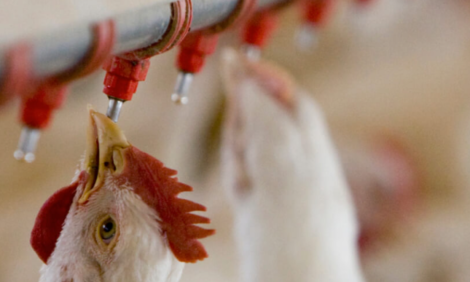



New report shows progress in achieving farm antibiotic targets
Twelve months after industry-led targets for antibiotic use were identified for all main farm livestock species in the UK, a review of progress has been released, including details of where targets have been achieved early and where challenges remainThe ‘One Year On’ report, issued Friday (16 November) by RUMA’s Targets Task Force, is a follow up to the work of the group in 2017, when a leading farmer and veterinary surgeon from each sector identified different starting points and potential for reduction in each species then worked with their respective sectors to gain support for the plans [1].
RUMA’s secretary general Chris Lloyd says this new review not only shows the transparency and accountability with which each sector is addressing its targets, but also collects information on progress into one place.
“The UK farming industry has already achieved reductions of 40 percent in sales of antibiotics over the past five years [2] and is one of the lowest users of antibiotics in Europe. However, delivering against these and future sector-specific goals will be key to meeting the government’s ambitions in its new 5-year Antimicrobial Resistance Strategy, to be released early next year,” he explains.
“What this review shows is the industry as a whole is committed and making good progress – but also that the sectors are all in very different places.
“Some species have met their targets already but now, with a measure of what’s happening in their sector, they know they can go further and are working on new goals. For others at or around their optimal level of use, progress is about animal health, continual refinements to what they do and working to overcome new diseases threats as they emerge.”
He says the pig sector is on track to meet its ambitious target reductions by 2020 but there is awareness of how much tougher it will get each year to deliver the changes needed; next steps could require investment or some brave decision-making for some.
“Cattle and sheep farmers and their veterinary surgeons are also working on a range of interventions, although a lack of representative data on antibiotic use across these specific sectors continues to be a challenge. If they had access to better data, this would give them more clarity over what is actually being used, and when – and where – improvements could be made.”
Mr Lloyd also stresses the importance of responsible reductions that do not compromise animal health and its associated welfare.
“The approach has to be sustainable with an end-goal of optimal – not zero – use. Antibiotics play an important role in preventing pain and suffering in our farm livestock as well as ensuring food safety. This is why it’s important to judge progress against the whole range of qualitative and quantitative measures in the review.”
The ‘Targets Task Force: One Year On’ report can be downloaded from the RUMA website.
[1] Targets Task Force report. RUMA, October 2017
[2] Veterinary Antimicrobial Resistance and Sales Surveillance Report 2017









